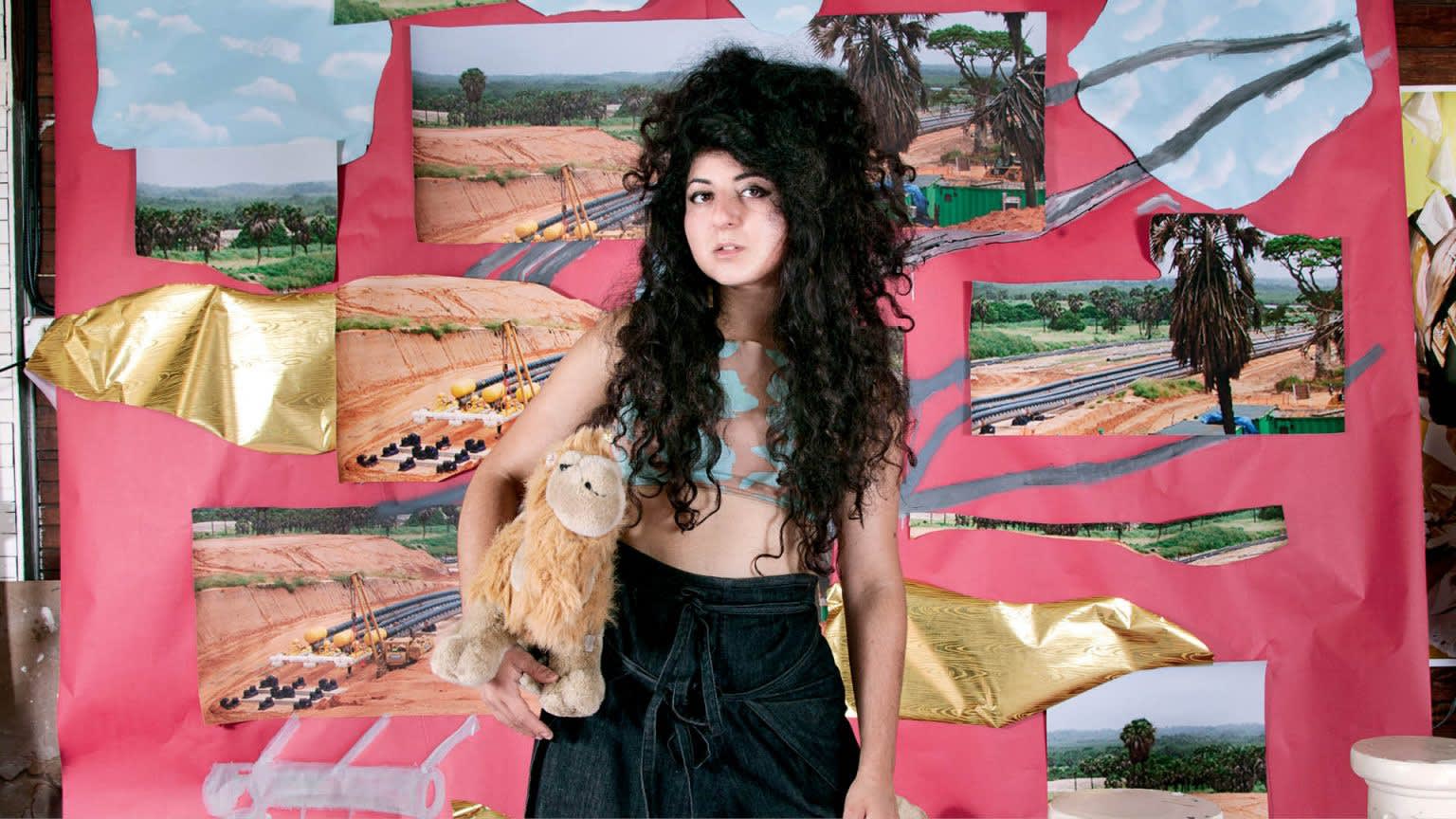14 January 2018 Oral histories, critical perspectives and socio-political injustices against Iranian women are tackled through the visual language of the first generation American-Iranian artist and Brandeis University professor.

Sheida Soleimani is working to dismantle societal conditioning by pushing back against exoticism, clarifying Western interest in the Middle East, addressing forced repression versus willing religious choice of gender issues, and bringing female injustice to the fore. It is a complex load to bear, but her art activism is one means to confront concerns that need a long-term unified front, and one in which questions of meaningfulness, effectiveness, and audience, arise.
Soleimani grew up in Cincinnati in what she has described as a relatively traditional Iranian childhood—but the relocation of her parents to the USA followed a volatile relationship with Iran that resonated strongly throughout her upbringing. Her political activist father was against the Ayatollah’s totalitarian regime and had to go into hiding for years before finding asylum, while her mother endured imprisonment and torture.
“My maman would draw me pictures of her prison cell and tell me bedtime stories about her life during the revolution,” shares Soleimani. “My baba would talk about his actions as a protestor over dinner, while also talking about socio-political struggles around the world, not just localised to their experience in Iran.” Acutely aware of human rights violations at an early age through the explicit lens of her parents, “They didn’t want me to grow up and think that the world was an idyllic place, they wanted me to know the truth—and I think that’s one of the best things you could do for a child.” Expanding her investigations and ensuing artistic depictions to women killed under what she describes as an “eye for an eye” Sharia law system via online forums, Human Rights Watch, and the dark web, she soon faced threats from the Iranian government and militia. So, if there is ever the thought that Soleimani is tackling the plight of Iranian women without firsthand experience, she is one step ahead of you.
You could question if art is the most appropriate vehicle to inform the public of brutalities far outside the realm of the art world and its market, or how legitimate Soleimani’s knowledge is given her generational and geographical distance. She is still one step ahead of you. Scouring social media for imagery of Iran’s trade culture, revolution, acid burn portraits and beaten bodies for her symbol-ridden colleges means that her content and technique mirror each other. The focus on cutting, ripping, folding and reassembling photographs implies aggression—the flattening of sculptural planes “reasserts the violence present in the photographs […] it becomes a surgical practice.” But Soleimani is quick to clarify that she is not capitalising on the horrors of others, nor going for visceral sucker-punches, instead, admitting the impossibility of representing the magnitude of brutality. The pixelated traces, a “post human collage” of the disappeared, serve to instigate a conversation used to “create awareness in a space where these issues are not discussed.”
Beyond her artistic production, “I work very hard to bring socially and politically motivated discussions into my classroom which target the ideas of art and activism, as well as how sociopolitical issues can be integrated within visual language,” says Soleimani. “I think about oversaturation as a tactic, and hope that the viewer can come away with one aspect of the piece to lend to their understanding of a situation.” The combination is universally accessible, a wordless means to breakdown cultural preconceptions. “To read or speak a language, you must have a specific educational background, often tied to a class system,” she explains. “To see an image and deconstruct it through your own ideologies opens up the possibility for more global communication. I think a lot about propaganda posters, and the symbols and cues that are used to navigate language barriers between people—these are motivations within my own practice of creating a lexicon of symbols and images that can be read by various groups to initiate conversation.”
Using what may appear as disadvantages to benefit her cause, “Being an Iranian in America gives me the platform to be able to discuss these issues more openly, which is unfortunately something that people within Iran are unable to do, due to the severe censorship under the regime,” explains Soleimani. Through awareness of multiple narratives by critically questioning existing systems and challenging perspectives of contemporary and historical issues, is there hope yet? “What makes a society more civil? Without radical changes between the relationships of governing classes to their citizens, ‘hope’ is becoming more and more elusive.”

